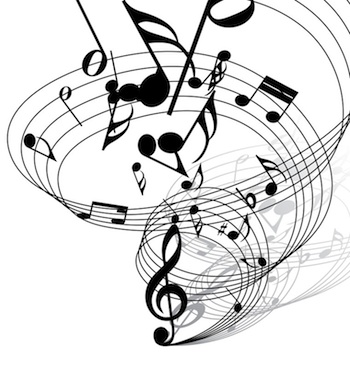Playing songs backwards can give you a whole new set of songwriting ideas.
_____________
Download “The Essential Secrets of Songwriting” 6-eBook Bundle, and solve your songwriting problems TODAY.
_____________
 It should be obvious that taking an already-existing melody and calling it your own is not something you really want to do. First of all, it’s illegal. True, you can find songs that are in the public domain, and create arrangements of them without worrying about copyright. But in those cases, you can’t claim authorship. And even if it were completely legal to take someone else’s melody and use it as if it were your own, why would you want to? Originality in the world of the arts is usually paramount.
It should be obvious that taking an already-existing melody and calling it your own is not something you really want to do. First of all, it’s illegal. True, you can find songs that are in the public domain, and create arrangements of them without worrying about copyright. But in those cases, you can’t claim authorship. And even if it were completely legal to take someone else’s melody and use it as if it were your own, why would you want to? Originality in the world of the arts is usually paramount.
But there is a way to take an already-existing melody and use it as a starting point to create your own “new” melody. And it’s actually kind of fun to do: try playing through existing music backwards.
This is easiest to do if you read music, because then it’s a simple matter of getting hold of the sheet music and playing through the music from back to front. But it’s also possible to do this by ear, and can wind up being a good ear-training exercise.
When you play through music backwards, don’t expect the tune to make a lot of sense. After all, songs are written to work in one direction only. But once in a while, you’ll notice a certain combination of notes that actually can work when you go in the opposite direction to what was intended by the composer.
Take, for example, the last few notes of “The Star-Spangled Banner.”
Here are those last notes played backwards:
Rather unremarkable, as we should expect. But with different rhythms, and a new set of accompanying chords, and you’ve got something entirely new, something that might stimulate your imagination and create a whole new song:
As you can see, the first 6 notes of the new melody are actually the last 6 notes of “The Star-Spangled Banner.”
You can do this with any song, and it has several benefits:
- No one will ever hear the original tune in what you’ve borrowed.
- While much of the time the original tune won’t sound great when played backwards, the exercise gets you thinking creatively, and gets you past the step of having to create something original out of thin air.
- You’d be surprised how much of a melody you can borrow and play backwards without it resembling the original tune.
There’s also a feeling of creating something that has historical significance. It’s a bit like taking some stones from an old castle, and creating a new building with them. No one will recognize the stones, but they’ll have a connection to the past that you can point out to others if you wish.
And it’s one more way to get ideas for writing your next song, if you find that those first notes are the toughest ones to find.
If you want to take the challenge, and write a song that uses notes from a well-known tune played backwards, feel free to post a link in the comments below for all of us to have a listen.
_________________
Follow Gary on Twitter
 PURCHASE and DOWNLOAD the e-books (PDF format) and you’ll learn much, much more about how to write great melodies, chord progressions, and every other aspect of songwriting.
PURCHASE and DOWNLOAD the e-books (PDF format) and you’ll learn much, much more about how to write great melodies, chord progressions, and every other aspect of songwriting.













Pingback: A Song to Tune - Fashionable Travel Journal by Naina